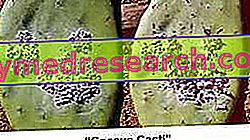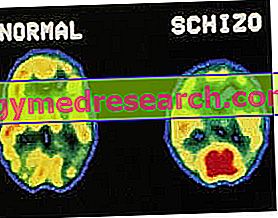The development of new alternative therapies to antibiotic drugs is becoming increasingly necessary, due to the growing spread of the antibiotic resistance phenomenon.

Antibiotic-resistance
Antibiotic resistance is a phenomenon in which bacteria become insensitive - therefore resistant - to antibiotic therapy.
Therefore, the drug becomes unable to kill or inhibit the growth of the bacteria responsible for the infection it is intended to treat.
Antibiotic resistance can be of two types:
- Intrinsic resistance, that is the resistance already present in the bacteria even before taking the drug;
- Acquired or induced resistance, that is the resistance that develops in bacteria only after taking the antibiotic.
Since the discovery of the first antibiotics to date, these drugs have been widely used, although not always correctly.
In fact, the abuse and misuse of antibiotics - especially in recent years - have favored the development of acquired resistance by bacteria; consequently, they favored the selection of new resistant bacterial strains.
The use of antibiotics even when not necessary, or the failure to respect the dosage and duration of therapy established by the doctor, are some of the erroneous behaviors that have favored - and, unfortunately, still today - favor the development of antibiotic resistance.
For these reasons, the research focus is on new therapeutic strategies that can constitute valid alternatives to antibiotic therapy, in the hope of identifying new treatments that are equally effective in countering infections, which do not favor the development of resistance and which induce less side effects.
Bacteriophage therapy
Bacteriophages (or phages) are viruses that can infect bacterial cells, but not human cells.
More precisely, bacteriophages attack bacteria by injecting their genetic material into them, so they can reproduce. In fact, the virus is not able to replicate independently and to do so it needs to exploit other cells, in this case, bacterial cells.
The bacteriophages, therefore, multiply inside the bacterium until they cause lysis and - consequently - death.
Discovery of bacteriophages
In 1896, the British bacteriologist Ernest Hankin observed that the waters of the Ganges River and the Jumna River in India possessed antibacterial properties that had reduced the incidence of cholera and dysentery cases in areas located near the two rivers.
Hankin hypothesized that these antibacterial properties were to be attributed to an unknown substance, able to go beyond the porcelain filters used to filter the water of the river, but that could degrade at high temperatures (thermolabile).
In later years, other bacteriologists observed similar phenomena, but none of them furthered the subject.
Nearly twenty years after Hankin's first observations, an English bacteriologist named Frederick Twort observed a similar phenomenon to that described by Hankin and hypothesized that the "unknown substance" with antibacterial activity could be a virus. However, due to lack of funds, Twort failed to continue his research in this area.
It was only two years after the French-Canadian microbiologist Felix d'Herelle, in the early 1900s, discovered - or rather rediscovered - the existence of bacteriophages.
Shortly after its discovery, d'Herelle made the first attempt to introduce a bacteriophage-based therapy for the treatment of dysentery. This attempt was successful.
Thereafter, bacteriophage therapy was also tested for the treatment of other infections and, even in these cases, positive results were obtained.
However, with the advent of antibiotics, the use of bacteriophages in the West was shelved in favor of using the newly discovered drugs.
In Eastern Europe, on the other hand, bacteriophage therapy has continued to develop and is still used today.
The rediscovery of bacteriophage therapy
Bacteriophage therapy - set aside in the West with the advent of antibiotic drugs - is again arousing strong interest, due to the continuous increase in the phenomenon of antibiotic resistance.
Bacteriophages are considered to be natural enemies of bacteria and have advantages over antibiotics:
- They are highly specific, as each bacteriophage is selective for a specific bacterial species or, even, for specific bacterial strains. This characteristic is very important because, in this way, the bacteria responsible for the infection are the only targets of the therapy and we do not witness the killing of the microbes that constitute the human bacterial flora, as often happens with the common antibiotic drugs. All this results in a reduction in the side effects caused by many antibiotics, such as - for example - diarrhea.
- Thanks to the lysis of bacteria, bacteriophages indirectly stimulate the immune system. In fact, with bacterial lysis cellular fragments are generated which are recognized by the cells of our immune system; this phenomenon thus allows the activation of all the defense mechanisms naturally present in the human body.
- It can happen that the bacteria develop a resistance also against bacteriophages, however, if this happens, the phages are able to develop in a short time a new strain able to attack the bacteria again.
- When the bacteria responsible for the infection are eliminated, the bacteriophages also disappear.
- They are cheap, as bacteriophages are readily available in nature.
Despite the important advantages they have, however, bacteriophages can also have some disadvantages:
- Since bacteriophages are highly specific towards certain types of bacteria, the phage-based preparation, carried out for the treatment of particular infections, must be personalized for each individual patient. It is therefore necessary to identify exactly which bacteria are responsible for the infection. This can cause problems, especially when the patient is in danger of life and there is no time to perform appropriate tests to identify the bacteria that trigger the infection.
- Bacterial toxins that can be harmful to the body may be contained within the same phage preparation.
- The transfer of bacterial genes between viruses can occur.
- Following bacterial lysis, excessive amounts of toxins can be released into the body leading to an over-stimulation of the immune system; this can cause the onset of a toxic shock.
In any case, despite the disadvantages, bacteriophage therapy remains a valid alternative to antibiotic therapy.
The biggest obstacle, probably, is that given by the mode of development of phage preparations. In fact, these preparations can be obtained in relatively short times starting from substances found in nature (such as, for example, river water). However, these preparation methods do not meet the Western standards that govern the development and use of new drugs.
In the United States, however, the Food and Drug Administration (FDA) has approved the use of bacteriophage-based preparations for the decontamination of animals, plants and respective derivatives destined for human consumption.
Quorum-sensing inhibitors
Quorum-sensing inhibitor therapy is arousing considerable interest as a possible alternative to antibiotic therapy.
This type of treatment is not able to kill bacteria, but prevents them from causing damage to the body.
To better understand the mechanism of action of this treatment, a brief introduction about what is quorum-sensing is useful.
Quorum-sensing
Quorum-sensing is a form of communication used by bacteria to exchange information with one another.
To communicate, bacteria use particular chemical compounds (called self-inducers) that provide information on the bacterial population, including information on its size.
When the bacterial population has reached the quorum (whose literal meaning is the minimum number of members, indispensable and necessary, in order to make management decisions), the autoinductors act by promoting or inhibiting the transcription of certain types of genes and regulating activation or less than metabolic pathways.
The quorum-sensing mechanism has been identified in almost all types of bacteria (both Gram-positive, and Gram-negative), including those pathogenic to humans.
The pathogenic bacteria communicate with each other to regulate the production of harmful substances or to activate mechanisms that allow them not to be recognized by the cells of the immune system of the host organism. Still other bacteria, through quorum-sensing, are able to delay the production of harmful substances until the bacterial colony has reached such dimensions as to ensure the establishment of the infection by overwhelming the host's immune system.
Quorum-sensing inhibitors
Quorum-sensing, therefore, is essential for the communication of certain pathogenic bacteria and for the release of the harmful substances they produce.
The blocking of this form of bacterial communication, therefore, could be useful to stop the onset of bacterial infections that otherwise could cause serious pathologies (such as, for example, cholera or infections with Pseudomonas aeruginosa ).
Furthermore, quorum-sensing inhibitor therapy appears to present a lower risk of bacterial resistance developing compared to antibiotic therapy.
Studies conducted on animals using quorum-sensing inhibitors to prevent the onset of Staphylococcus infections have given positive results.
Therefore, research in this field is continuing to develop in an attempt to identify new molecules capable of inhibiting bacterial communication and the resulting infections and pathologies.



